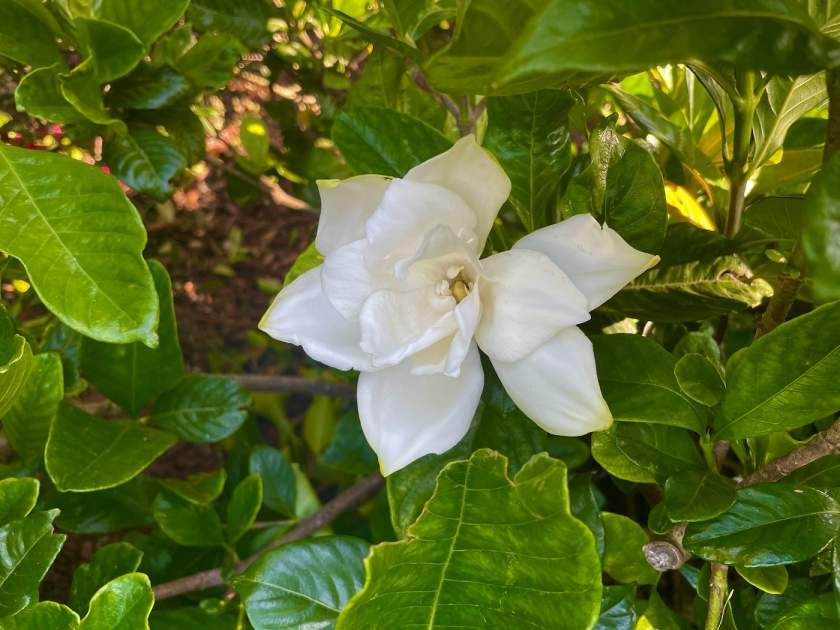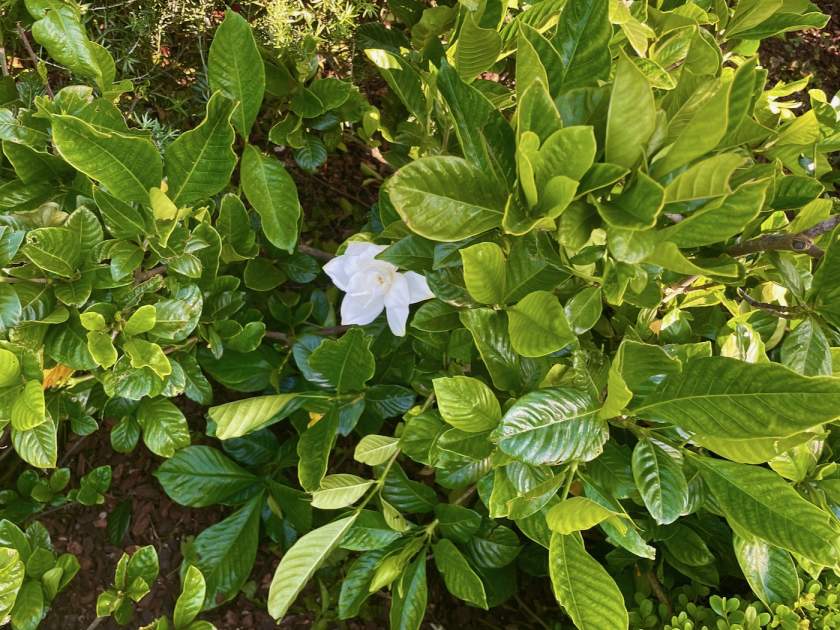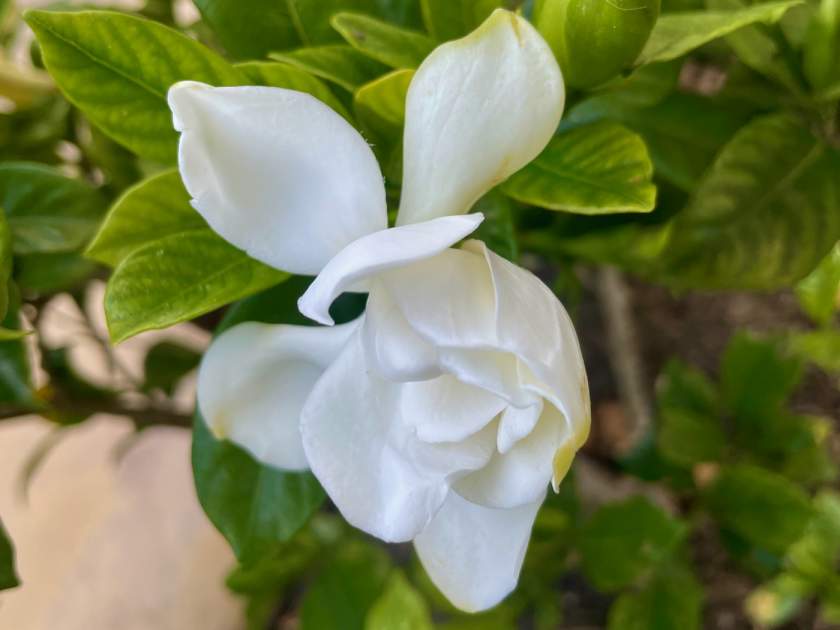Gardenia jasminoides – The Fragrant Beauty of the Coffee Family
Gardenia jasminoides, commonly known as gardenia and Cape Jasmine, belongs to the Coffee family Rubiaceae. Native to parts of South-East Asia, this evergreen flowering shrub is prized for its shiny green leaves and heavily fragrant white summer flowers. The wild plants of Gardenia jasminoides vary in height, ranging from 30 centimeters to 3 meters (about 1 to 10 feet). They have a rounded habit with very dense branches and opposite leaves that are lanceolate-oblong, leathery, or gathered in groups on the same node, boasting a dark green, shiny, and slightly waxy surface with prominent veins.
Characteristics: Leaves and Flowers
The leaves of Gardenia jasminoides are a spectacle in themselves. Ranging from 3 to 25 centimeters (1.2 to 9.8 inches) in length and 1.5 to 8 centimeters (0.6 to 3.1 inches) in width, they come in various shapes, such as oblong-lanceolate, obovate-oblong, obovate, oblanceolate, or elliptic. The upper surface is smooth and shiny, while the undersurface can be sparsely hairy to smooth. Each leaf showcases 8 to 15 pairs of secondary veins, adding to its intricate appearance.
The striking flowers of Gardenia jasminoides are solitary and terminal, gracing the ends of the stems. These white blossoms have a matte texture, setting them apart from the glossy leaves. As they mature, they gradually transform into a creamy yellow color, with a waxy surface that adds to their allure. The flowers can reach a considerable size, up to 10 centimeters (4 inches) in diameter, and come in loosely funnel-shaped forms. The most captivating feature of these blooms is their strong and delightful fragrance, making them one of the most aromatic flowers in existence. Gardenia flowers are especially valued for their use as floral offerings at Buddhist temples in Tropical Asia.
Cultivation of Gardenia jasminoides:
Gardenia jasminoides is a perennial evergreen shrub with a mature size ranging from 3 to 8 feet tall and wide. To successfully cultivate this beauty, one must consider factors such as sunlight, watering, soil type, and hardiness zones.
Sunlight: Gardenias thrive in full sun to part sun conditions. While they prefer full sun, some shade is appreciated during warmer months to prevent leaf scorching and bud dropping. In cooler regions, they can tolerate full sun, especially when their roots are protected by organic mulch. Gardenias grown indoors should receive at least 6-8 hours of direct sunlight through a sunny window.
Watering: Adequate and consistent watering is essential for gardenias. The soil should be kept consistently damp but not soggy. Avoid letting the soil dry out, as it can cause bud drop. To maintain soil moisture and a constant temperature, apply a 2-4 inch layer of organic mulch. For best results, water with distilled water once a month to remove excess fertilizer salts from the soil.
Soil: Gardenias prefer organically-rich, well-drained, and loamy soil with a slightly acidic pH ranging from 5.0 to 6.5. To enhance the acidity and enrich the soil, you can incorporate compost, manure, ground bark, or sphagnum peat moss.
Hardiness Zones: Gardenia jasminoides thrives in hardiness zones 8-11 (USDA), with certain selections suitable for Zone 7.
Temperature and Humidity:
These subtropical beauties flourish in humid temperatures above 60 percent, which helps ward off spider mites in dry conditions. During their growing and blooming season, day temperatures between 65 and 70 degrees Fahrenheit and night temperatures between 60 and 65 degrees Fahrenheit are ideal. Gardenias are intolerant of cold temperatures below 15 degrees Fahrenheit, and prolonged exposure to such cold can cause damage or death. For colder regions, there are varieties like ‘Frostproof’ that can tolerate Zone 7 temperatures.
Fertilizer: Gardenias should be fed every three to four weeks during the growing season with acid fertilizer, fish emulsion, blood meal, or even coffee grounds. Regularly test soil pH levels to ensure the plants’ health.
Propagation: Gardenia jasminoides can be propagated through various methods such as layering, softwood cuttings, hardwood cuttings, or grafting. It is crucial to select an appropriate site for gardenias as they do not like being transplanted.
Pests and Diseases: While gardenias are beautiful and aromatic, they can be somewhat fussy and temperamental in their cultural needs. Keep an eye out for foliage-chewing insects and fungal diseases, and address any issues promptly.
Aromatic Beauty of South-East Asia
Gardenia jasminoides, also known as cape jasmine, is a fragrant and enchanting addition to any garden or indoor space. Its glossy leaves and aromatic white flowers bring delight to gardeners and admirers alike. To ensure its successful cultivation, providing the right sunlight, watering, and soil conditions is crucial. With its elegant beauty and captivating fragrance, Gardenia jasminoides continues to be cherished in warm temperate and subtropical regions, making it a cherished gem in the world of horticulture.






